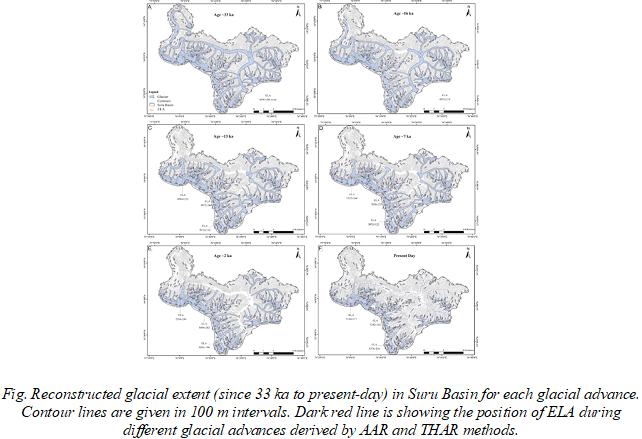Scientists have found that glaciers in Suru Basin, Ladakh, and western Himalaya, have fluctuated greatly throughout the Marine Isotope Stages (MIS) to the Little Ice Age (LIA). The glacial chronologies from such semi-arid regions can help understand the past climate changes and in assessing the impacts of future climate change in the region.
The glaciation records from the Himalaya and neighboring mountains have shown that the spatial patterns of glacial response, as well as the timing of the glacial advance, differ from place to place on a scale of a few kilometers. Therefore, synchronicity and forcing factors in the glacial responses across the Himalaya are debatable, and there is a need to develop a larger chronological data set from climatically and geomorphologically varying regions of the Himalaya. These, along with glacier health (mass balance) monitoring, dynamics, and discharge, can help speculate the future impact of climate change on glaciers.
A team of scientists from Wadia Institute of Himalayan Geology (WIHG), Dehradun, Uttarakhand, India (An autonomous institute under DST, India), have studied the glaciers in Zanskar, Ladakh. The WIHG team, in one of the recent study published in the journal Quaternary Science Reviews, has reported that the glaciers in Suru Basin, Ladakh, and western Himalaya, have fluctuated greatly throughout the Marine Isotope Stages (MIS) 3 and 2 to the Little Ice Age (LIA). Five major glacial advances of decreasing magnitude, dated 33–23 kilo annum (ka), 16 ka, 13–11 ka, 10–7.3 ka, 2.8–2.3 ka, and a minor advance dated 0.7–0.4 ka are reported from the area. These five major glacial advances are named from oldest to youngest as Suru-I to V, based on their optical chronology, geographical position, the stratigraphy of the moraines, and glacially polished rock surfaces.
Whereas the equilibrium-line altitude (ELA), which is a dividing altitude between glacier accumulation and ablation, ascended by around 538 m from the oldest glacial advance (Suru-I) to the present day, followed by four other events (Suru-II, III, IV, and V) with ascended ELAs of around 522, 399, 243, and 215 m, respectively. The glaciers in this region have lost around 502 km2 in its glaciated area and around 163 km3 in ice volume from 33 ka to the present day.
Publication Link:
https://doi.org/10.1016/j.quascirev.2021.107100































